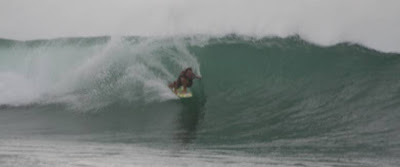Impressions of the Vava’u Experience


Onboard lifestyle included devouring a huge ‘welcome’ fruitcake, restful nights in a comfortable bed and not-too-early rising, Nick’s breakfast porridge with raisins and sliced banana, Blue’s yellowfin tuna lunch and dinner (fried, sushied and curried), cups of tea and milo and little coconut bowls of nibblies in the evenings. Nick got stuck into the swag of mail, and the business stuff that it engendered, and Blue sought perfection in her culinary and her coconut arts. Blue took great care to ensure that her mother was comfortable, sunscreened, shod appropriately, sleeping soundly, replete foodwise, and well hydrated.

There were wonderful swathes of time talking, and talking and talking, some of it while Blue concentrated on creating her exquisite pieces of art. Nick appeased his need for robust activity by kite-surfing (with attendant wad-punch injuries), equipping himself with a wooden spear and enacting a wild boar hunt (with synchronized pig vocals from Blue), vanishing into the watery depths while snorkeling (henceforth known as deep-sea snorkeling), and waging war with the resident billygoat monarch of Hunga Island, who reared to his two-legged, fully-six-foot height before each charge. (Bluey, the previous day, had discouraged this aggressive, masculine behavour by soccering coconuts in very accurate shots at the goat, but Nick relished the encounter). As an aside, it is a pity really, about the existence of King Billy and his subjects; differences in the vegetation of islands that are goat-ed and those that are goat-less are stark. Blue and Nick are an integral part of the cruising fraternity, and love exchanging sailing-type anecdotes with other yachties when they happen across fellow-members in the town, on the mooring or on an otherwise deserted island.

The young people who live on Vava’u and the surrounding islets are beautiful. They have café latte skin, broad faces, plump smiling lips and big brown eyes. The women dress modestly, generally in long skirts, and some men wear a black wrap-around sarong. Older men and women have much more generous bodies, and sometimes overlay their clothing with a large woven ‘mat’ that extends from their ankles to their armpits and is tied securely at the waist.
There is nothing frenetic in Vava’u. Traffic in the harbour town of Neiafu is quite heavy, but drivers are mindful of pedestrians, dogs, pigs and other road users. People laugh a lot. I was introduced to this phenomenon before I even arrived in Vava’u, at the airport in Nuku Olofa, where baggage handlers lazed on the baggage cart, laughing among themselves; the cheerful woman at customs chuckled as she confiscated a kilo of pistachio nuts; and the rotund fellow in the colourful shirt maintained a happy disposition even as he told me the airline I had booked with for Vava’u hadn’t been in the air for over a week. The 3am airport departure crowd, comprising in part little kids and some really old people in wheelchairs, was a jolly lot as well. In Vava’u itself the tendency to joviality continued. Sellers in the marketplace happily encouraged us to buy a carved humpback whale tooth, unfazed and smiling still as Blue attempted to acquaint them with cetacean anatomy. Young men preparing for a Sunday morning session under the trees on woven mats encircling an ancient kava bowl, did so with great risibility.
On that same Sunday morning, as we emerged from a jungle track traversing the tiniest of islands, we came upon a picturesque weatherboard church set amid lush, well tended gardens. We were stopped dead by the sounds of glorious singing – men and women belting out hymns in their own language in rich, beautiful harmony. The atmosphere was magical and unworldly, so we lingered awhile to soak it up. The missionaries have left other legacies including beachside avenues of enormous ficus with gnarled roots, and ancient citrus trees along pathways. But by far the most startling, however, are the churches. There is one in every village, apparently regardless of size, and, unlike the dwellings, are meticulously maintained. In contrast to the surrounding buildings, the cathedral in Neiafu is freshly painted - brilliant white, with intricate red detailing.
























.jpg)
.JPG)
.JPG)
















